Venezia ObServer |
|
Back to the Calatrava bridge article in Venezia ObServer Click on images to enlarge The Calatrava BridgeHere the throat of the whale which has swallowed euros by the millions in the past 11 years. The Calatrava bridge in Venice: who knows how many real whales could have been saved with that amount of money. |
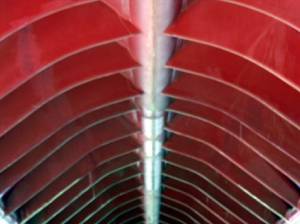 ponte-calatrava-01.jpg |
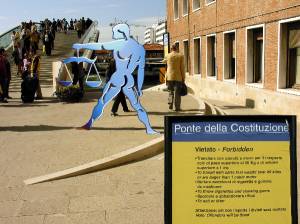 ponte-calatrava-02.jpg |
A stylized Guard in front of Calatrava bridge admonishes the passers by to weight well their baggage, as the Calatrava bridge won't accept any luggage heavier than 20 Kilos. Maybe a electronic scales would better fit! :-) |
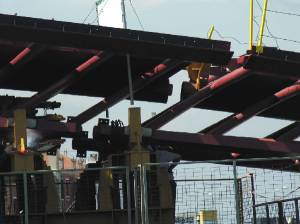 ponte-calatrava-03.jpg |
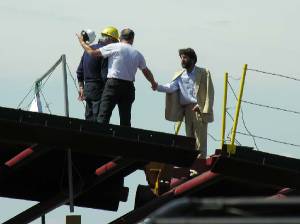 ponte-calatrava-04.jpg |
|
A little jump back in time: we are on September 2008, the day of the laying of the central segment of Calatrava bridge. The pic on the right shows the main supporter of Calatrava bridge adventure while congratulateing the technical staff. On both sides of Calatrava bridge still we see some missing parts in the structure, but nobody doubts that those holes will be filled soon as the iron ropes which keep the main arch under tension, will be released. | |
|
The release of the ropes is made very slowly and smoothly but, wow, a couple of months later the holes between the Calatrava bridge segments and between those and the Calatrava bridge shoulders are still there!. Something was wrong in measures, or in the calculation of materials’ shape-memory, or maybe the shoulders are still slipping aside (see Venezia Observer 2006’s article and related photo evidences), or may else be all these factors together. As a matter of facts the Calatrava Bridge shows many evident structure flaws, and it becomes necessary to remedy via some zonte, as is adjuncts. |
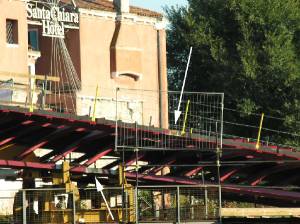 ponte-calatrava-05.jpg |
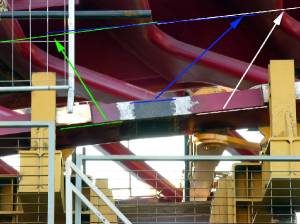 ponte-calatrava-07.jpg |
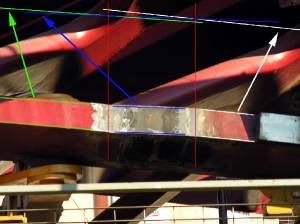 ponte-calatrava-06.jpg |
|
And such adjuncts are not of some millimetres which could be filled through a good soldering! Between the central and the lateral segments, on both sides of Calatrava bridge, about 40 centimetres are missing! These lacks are plugged with patches, but the line of the arch is heavily compromised by the point of view of aesthetics, while the engineering structure becomes gibbous and worrisome. | |
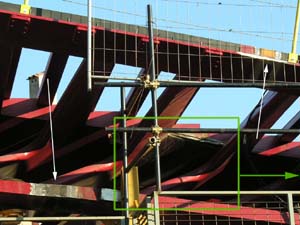 ponte-calatrava-08.jpg |
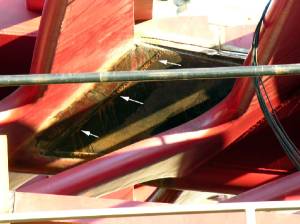 ponte-calatrava-09.jpg |
|
The joints between central and side segments are not alone in being roughly patched. Also between the Calatrava bridge and its own shoulders, the iron parts show evidences of reshuffles and adjuncts, zonte. | |
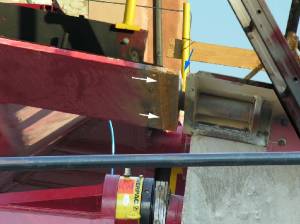 ponte-calatrava-10.jpg |
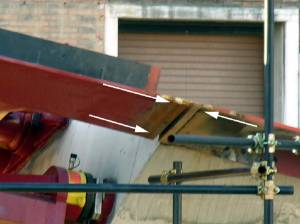 ponte-calatrava-11.jpg |
|
On the high arches of Calatrava bridge (above foto) we see patches realized with thick plates, which extend some centimetres the upright. | |
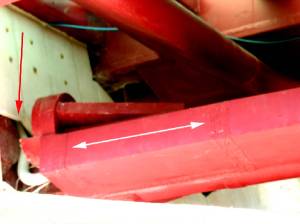 ponte-calatrava-12.jpg |
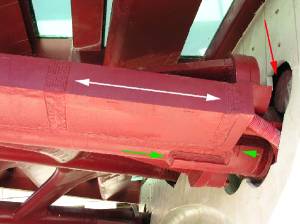 ponte-calatrava-13.jpg |
|
Now the upper arch has been dressed with a moulding which hides the adjuncts to a superficial observer. But passing under the Calatrava bridge the adjuncts are still evident under the thick varnishing. | |
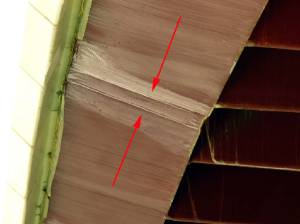 ponte-calatrava-14.jpg |
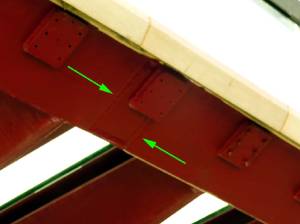 ponte-calatrava-16.jpg |
|
The lower arches of the Calatrava bridge, instead, were not disguised, and the adjuncts are well relevable as irregularities in the line of the arches. | |
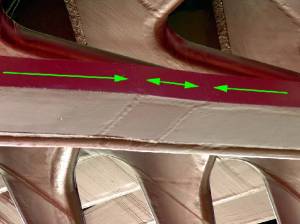 ponte-calatrava-15.jpg |
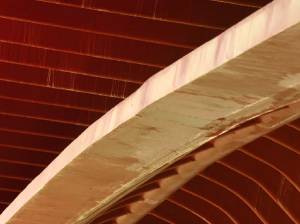 ponte-calatrava-17.jpg |
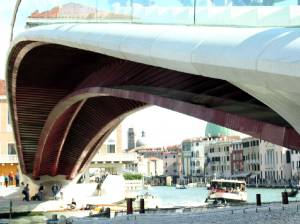 ponte-calatrava-18.jpg |
Seen as a whole, the Calatrava bridge's arch results labored and somehow segmented, with flattened parts while others are in unnatural torsion. |
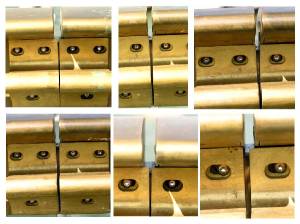 ponte-calatrava-19.jpg |
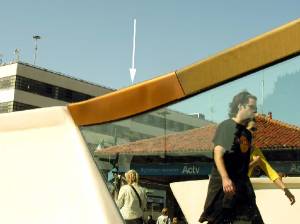 ponte-calatrava-20.jpg |
|
I.E: we observe that were not resolved in the project the joints of the parapets (photo above on left), nor those between them and the stone shoulders of Calatrava bridge(photo above on right). | |
These stone shoulders, indeed, are made in a cheap stone: soft, fragile and unsuitable in the salty athmosphere of Venice (not to talk of sulphuric pollutants), they also seem to come from defective blocks. So, the stone elements too obey the "law of adjuncts" which seems to rule the whole Calatrava bridge, and we can see it in these pictures. Rough patches, as evidenced in the first photo by the yellowish glue smears. |
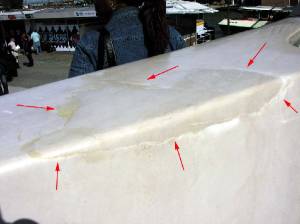 ponte-calatrava-21.jpg |
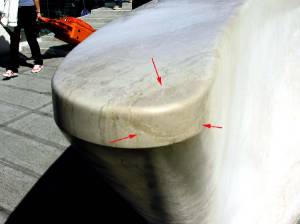 ponte-calatrava-22.jpg |
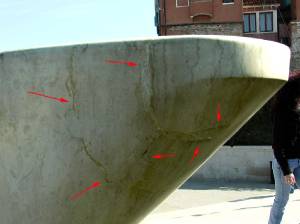 ponte-calatrava-23.jpg |
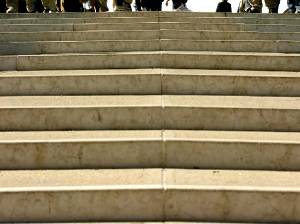 ponte-calatrava-24.jpg |
The steps follow the mellon-skin shape of the Calatrava bridge, creating series of slanting false planes which refer more to a recreational use of the space than to a functional one. |
Indiana Jones’ trapdoor. I can’t figure out what this wide trapdoor is used for; certainly it was added far later not only the Calatrava bridge projecting phase, but also after the setting of paving stones on Santa Lucia side. |
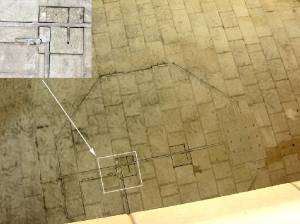 ponte-calatrava-25.jpg |
 ponte-calatrava-26.jpg |
Was Mr. Calatrava aware that the bridge was intended to be built in Venice? What are those Florentine Lilies for? It is already astonishing that a space for friezes could be found in such a "pure-lined structure", even if on those gross muffs of the parapet, but if an ornament had to be there, wouldn’t a Venetian Lion head have better fitted? Why is a Florentine Lily in the Calatrava bridge on the Grand Canal of Venice? |
Or maybe it is not a Lily of Florence, but that Lily of France which was fire imposed by the King of France on the face of reknown thieves?? | |
| Sign the Petition for the Public Health Committee in Venice |
|---|

|
|||||
|---|---|---|---|---|---|
| & photos | charas |